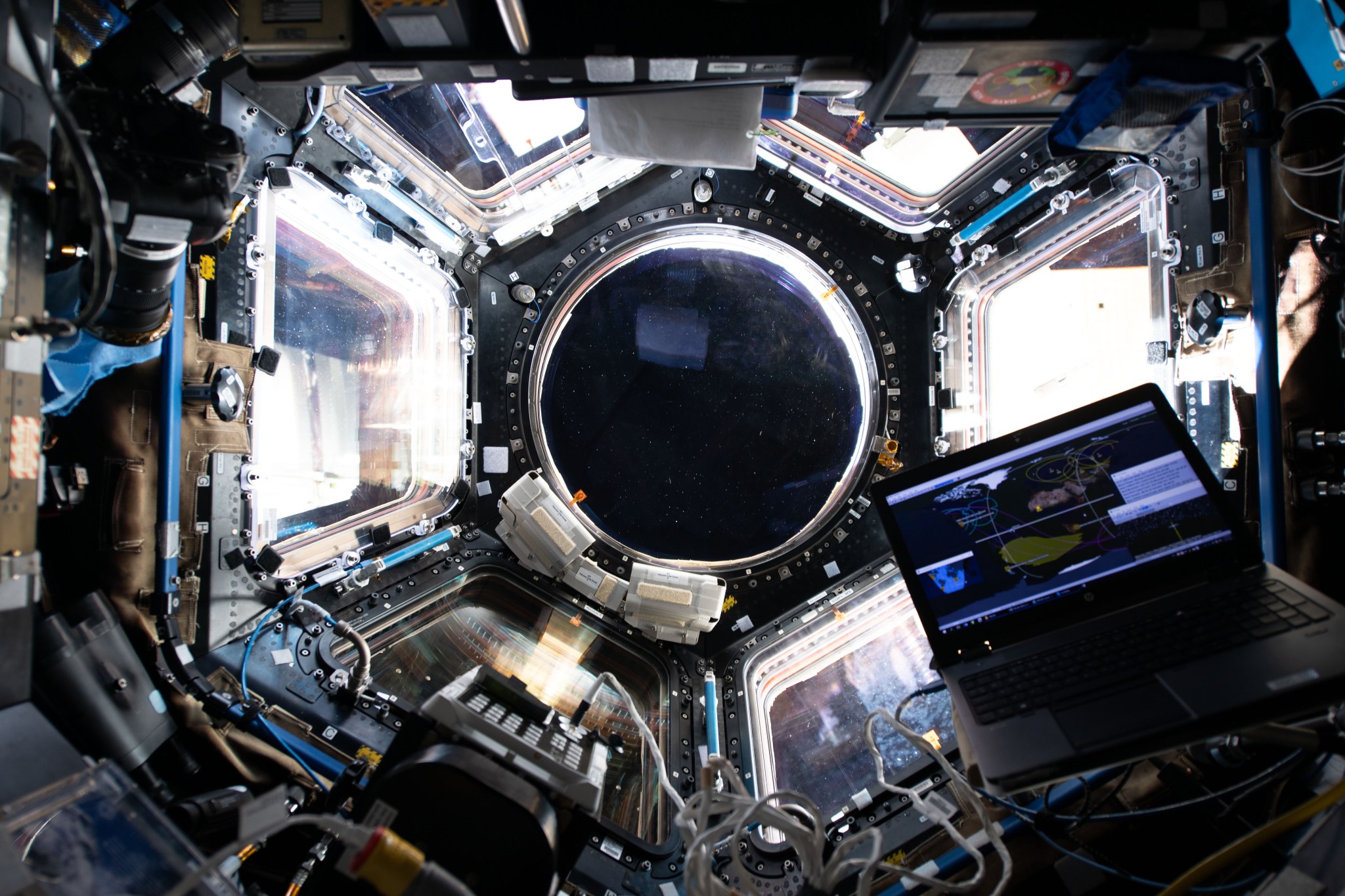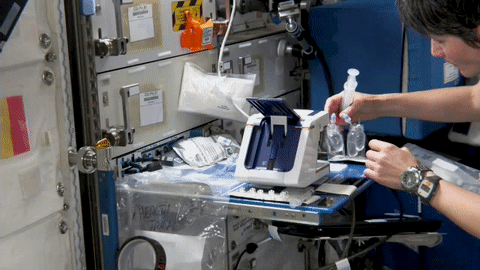
Lee esta historia en español aquí.
Crew members aboard the International Space Station conducted scientific investigations during the week of May 9 that included testing the effects of spaceflight on hearing, monitoring blood flow in the brain, and demonstrating function of a medical diagnostic device in microgravity.
Here are details on some of the microgravity investigations currently taking place on the orbiting lab:
What’s that sound?
To assess the possible adverse effects of noise on the space station and the microgravity environment on human hearing, Acoustic Diagnostics, an investigation from ESA (European Space Agency), tests the hearing of crew members before, during, and after flight. While the symptoms of mild hearing impairment can be temporary, it is important to detect them as early as possible before they lead to more significant issues. For this project, researchers developed a testing device with improved diagnostic power that also could reduce the duration of hearing tests. A portable device that works in noisy environmental conditions could have applications in occupational health settings on Earth, too. During the week, crew members took measurements for the investigation.
Brain blood flow
The brain needs a reliable blood supply and is capable of self-regulating blood flow even when the heart and blood vessels cannot maintain an ideal blood pressure. Cerebral Autoregulation, an investigation from the Japan Aerospace Agency (JAXA), tests how microgravity affects this self-regulation, measuring blood flow in the brain before, during, and after a long-duration spaceflight. After returning to Earth, many astronauts experience lightheadedness, which may be related to changes in brain blood flow. Understanding these changes could improve efforts to treat or provide countermeasures for the condition. On Earth, millions of people experience lightheadedness or even faint when the brain cannot compensate for a sudden drop in blood pressure. Understanding how to improve the brain’s self-regulation of blood flow could benefit these people as well. Crew members set up and performed a session for the investigation during the week.
Medical monitoring for deep space
To monitor their health on future deep-space exploration missions, crew members face unique challenges such as limited space for medical devices and the inability to return samples to Earth for analysis. The rHEALTH demonstration tests whether a modified commercial off-the-shelf device can accurately diagnose certain medical conditions in microgravity. The device employs flow cytometry, a method using lasers to sort and identify cells that can analyze cell count and cell characteristics; detect microorganisms, biomarkers, and proteins; and diagnose health disorders such as blood cancers. This technology also could provide timely, cost-effective, reliable, and convenient diagnostic tests for patients in remote settings on Earth. The crew worked on hardware operations for the investigation during the week.

Other investigations involving the crew:
- For CEO, crew members take photographs of the Earth, recording human-caused changes such as urban growth and reservoir construction and natural events such as hurricanes, floods, and volcanic eruptions. Images are used in disaster response and for a variety of scientific research, including studies of algal blooms and melting ice shelves. Crews receive a daily list of specific targets.
- XROOTS uses hydroponic (liquid-based) and aeroponic (air-based) techniques to grow plants without soil or other traditional growth media. Current space-based plant systems do not scale up well in space, and hydroponic and aeroponic techniques could enable production of crops on a larger scale for future space exploration.
- Food Physiology characterizes the effects of an enhanced spaceflight diet on immune function and the gut microbiome. Results could help define targeted, efficient dietary interventions and requirements for a food system to maintain crew health and performance on future long-duration missions.
- The ESA GRASP investigation examines how our central nervous system integrates information from different sensations such as sight and hearing to coordinate grasping an object. This investigation could provide insight into how the body adapts to microgravity and how to best treat the loss of vestibular function on Earth.
- Airborne Particulate Monitor (APM) demonstrates an instrument for measuring and quantifying the concentration of particles in spacecraft air. Results could support design of better environmental monitoring hardware for space vehicles and habitats, which becomes more important as mission duration increases. The technology also has applications in environmental monitoring and air pollution studies on Earth.
- Wireless Compose-2, an investigation from ESA, demonstrates wireless infrastructure for sensor monitoring and data transmission to support scientific experiments in microgravity. Results could contribute to new technologies for monitoring the health of astronauts and people on the ground and hardware that provides more precise control of free-flying robots.
- ISS Ham Radio provides students, teachers, parents, and others the opportunity to communicate with astronauts using amateur radio units. Before a scheduled call, students learn about the station, radio waves, and other topics, and prepare a list of questions on topics they have researched.
The space station is a robust microgravity laboratory with a multitude of specialized research facilities and tools. Over more than two decades of continuous operation, it has supported many scientific breakthroughs from investigations spanning every major scientific discipline. The orbiting lab conveys benefits to future space exploration, advances basic and applied research on Earth, and provides a platform for a growing commercial presence in low-Earth orbit.
For daily updates, follow @ISS_Research, Space Station Research and Technology News or our Facebook. Follow ISS National Lab for information on its sponsored investigations. For opportunities to see the space station pass over your town, check out Spot the Station.
John Love, ISS Research Planning Integration Scientist
Expedition 67



























